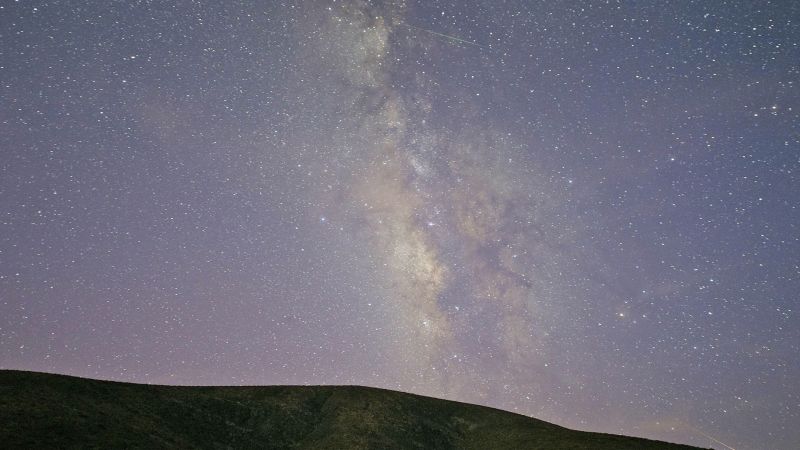When and where can you see the dazzling Eta Aquarids meteor shower?

(CNN) — May kicks off with the Eta Aquarids meteor shower, and experts expect the show to be better than in recent years, according to the American Meteor Society.
According to EarthSky, when the meteor shower is expected to peak, in the early morning hours of Sunday and Monday, the moon will be only 6% illuminated in its new moon phase. Experts advise keeping an eye on the sky between 2 a.m. and 5 a.m. local time.
The Eta Aquarids meteor shower is often considered the best meteor shower of the year in the Southern Hemisphere, where skywatchers could see 20 to 40 meteors per hour, and possibly more, according to EarthSky. In the Northern Hemisphere, observers can expect to see 10 to 20 meteors in the hours before sunrise, according to NASA.
The source of the Eta Aquarids meteor shower is Halley’s Comet. The Earth crosses the comet’s orbit every spring between April and May, causing small particles of rock and dust released by the comet to enter our planet’s atmosphere and create a dazzling meteor show. This occurs again in October, causing the Orionid meteor shower.
Halley’s Comet was last seen crossing Earth’s night sky in 1986, and will pass by again in 2061, traveling on a 76-year orbit around the Sun.
The meteors appear to be coming from the northeastern part of the constellation Aquarius, which gave the shower its name.
The number of visible meteors per hour this year is expected to be “increased due to debris disturbed by Jupiter in a direction closer to Earth,” according to the American Meteor Society. “The last time this happened was in 2013, when the performance was significantly improved.”
Astronomers had expected higher speeds for the Eta Aquarids in 2023, but the full moon obscured the meteors and scientists were unable to verify whether this increase had occurred. But without lunar intervention on the horizon, the number of visible meteors could double if such an intensification occurs, according to the American Meteor Society.
If you live in an urban area, you may want to move to an area where there are no city lights blocking your view.
Find an open area with a wide view of the sky. Make sure you have a chair or blanket so you can look straight up. And give your eyes 20-30 minutes to adjust to the darkness without looking at your phone to make it easier to spot meteors.
The American Meteor Society invites viewers to share their observations of the meteor shower, which will help astronomers determine whether there were more meteors than expected.
“The Eta Aquarids will provide a good opportunity to see the greatest activity from this source until the 2040s,” the American Meteor Society said. “We strongly encourage anyone with clear skies to observe during this time and share your observations. We wish you good luck and look forward to your results!”
Here are the remaining meteor showers to expect in 2024.
meteor showers
Southern Delta Aquarids: July 29–30.
Alpha Capricornids: July 30–31.
Perseids: August 11-12.
Draconids: October 7–8.
Orionids: October 20-21.
Southern Taurids: November 4-5.
Northern Taurids: November 11-12.
Leonids: November 17-18.
Geminids: December 13-14.
Ursids: December 21-22.
full moon
According to the Farmers’ Almanac, each month’s full moon is associated with a specific name. But among different indigenous tribes, the full moon has many names and meanings.
May 23: Flower Moon
June 21: Strawberry Moon
July 21: Deer Moon
August 19: Sturgeon Moon.
September 17: Harvest Moon
October 17: Hunter’s Moon.
November 15: Beaver Moon.
December 15: cold moon.
Solar and lunar eclipses
On October 2, an annular solar eclipse will occur over parts of South America. This type of eclipse is similar to a total solar eclipse, except that the Moon is at the farthest point in its orbit from the Earth, so it cannot completely block the Sun. Instead, annular solar eclipses create a “ring of fire” in the sky. the sky, like the burning light of the sun, surrounds the shadow of the moon.
A partial lunar eclipse, where the Earth moves between the Sun and the full Moon without being perfectly aligned, will appear over Europe and much of Asia, Africa, North America and South America between September 17 and 18.
Visit the Time and Date website to find out when these eclipses will appear.